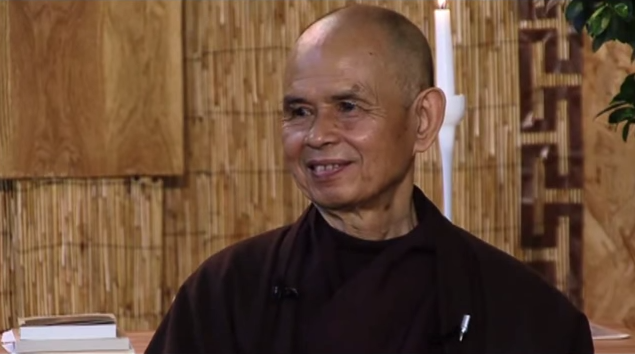 Question: How can I practice when my partner is not interested in the practice?
Question: How can I practice when my partner is not interested in the practice?
Thay’s Answer: When you are lovable, when you are fresh, when you are appreciative of the other person, you have the chance that everything you do is appreciated by him or her. When you truly love a person, you love everything about that person. That is a natural tendency, and that is why the spiritual can be recognised in every act of daily life. We don’t need to say that it is spiritual. That will turn people off.
When you drink our tea mindfully, peacefully, and happily, there is mindfulness, concentration, and insight in you. Drinking tea is a spiritual thing. It radiates peace, happiness, and joy. That is already spiritual. We don’t need to say, “Well, I want to drink my tea spiritually.” The practice of the 5 Mindfulness Trainings is like that, too. You don’t need to say, “I practice the 5 Mindfulness Trainings.” You just live according to the trainings and practice without a name, but it is a real practice. You are Buddhist, but you don’t need to tell that you are a Buddhist.
You don’t want to impose on him or her your way. If you practice well, you are happy and fresh, that’s good enough. One day the other person may ask, “Darling, how could you do it? In such situation, I would not be able to do it like you.” That is the time where you can share your practice formally. But be the practice and the Dharma first and that is good enough. You draw him or her into the practice in one way or another.
Remember, don’t try to impose your practice on him or her. Don’t practice too formally. There are those who practice walking meditation in a very funny way. They want to show that they are practicing walking meditation. They don’t look very natural (everyone laughs). There are those who walk very deeply and happily, but they show that they are too serious in the practice. When you breathe in mindfully and joyfully, don’t try to show people that you’re breathing in mindfully and you’re a good practitioner. (everyone laughs)
In Buddhism, we have an expression: “Practice the non-practice.” We don’t need to have much appearance. And that way, we can convey the essence of the practice and if the person wants to be happy, peaceful and serene, they have a chance to learn.
This was transcribed from a Q&A session with Thich Nhat Hanh in Plum Village, May 2014.








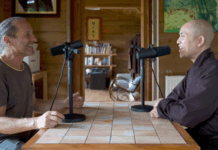









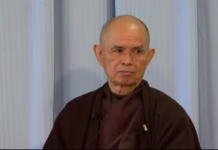
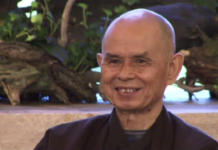
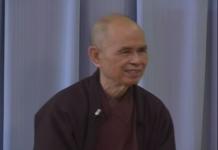
Practicing meditation and mindfulness does not require a partner. You can do it by yourself. And as you experience and express greater insight, peace and happiness those around you might become more interested and ask you to share with them what you are doing. I have been recommending and teaching my psychotherapy practice clients mindfulness and Being Meditation for 4 decades. From children to seniors it has multiple benefits and no negative side effects. I have seen executives become far better
at their jobs and more successful in their careers and personal lives due to their practice of meditation. I also teach my university students mindfulness early each semester. It helps them deal with the many pressures placed upon them as well as provides them with needed clarity. Often it is helpful to have some guidance or a teacher when beginning to do meditation. When a teacher is not available or possible I highly recommend the guided meditation training downloads by Jon Shore at http://www.meditation-download.com to most of my clients since they are very effective. Mindfulness and meditation are exercises that take discipline and practice but the benefits achieved are well worth the short time commitment each day.
One can argue all day about the effectiveness of meditation or mindfulness or one can try it and see for oneself. I usually recommend the second option.
“Drinking tea is a spiritual thing.” My daughter recently grew herbs inside. She was so excited to be (pseudo-)gardening that she named the plants and carefully considered how they were feeling. She worried when it came time to harvest a plant. It didn’t bother her so much to eat the plant. But she worried how it felt to be lying in the compost bucket.
Where does the plant end & the earth begin? Does the plant ever feel separate from the earth? Is the boundary arbitrary, set by our microscopes and biochemical analyses? For that matter, where does the plant end and we begin?